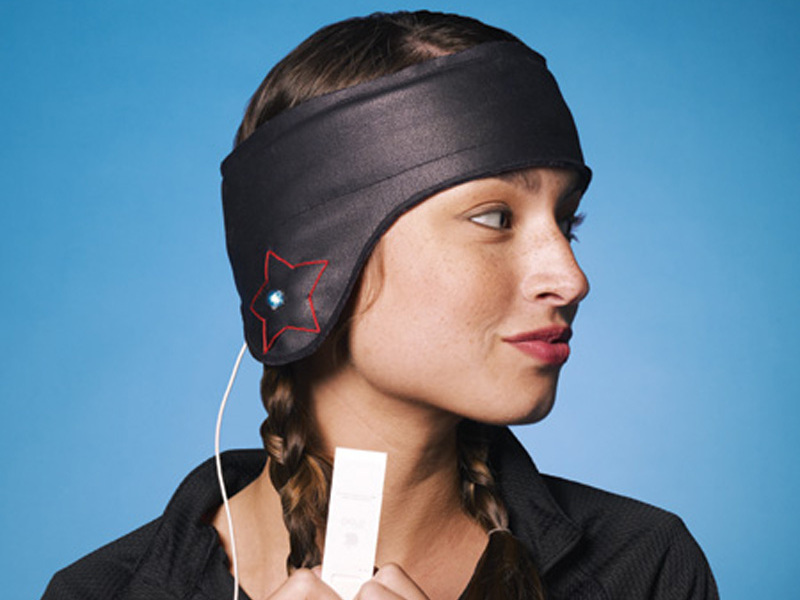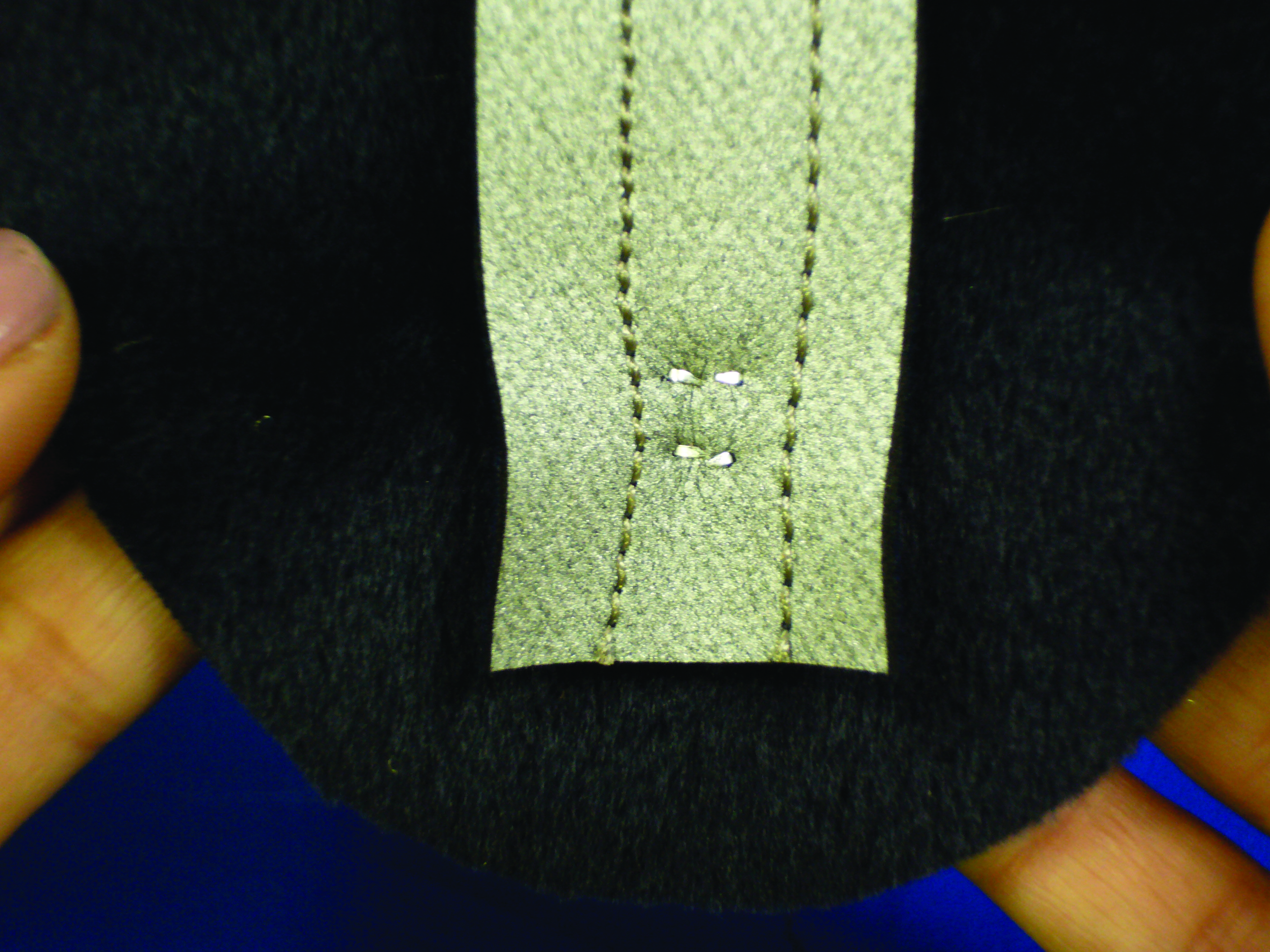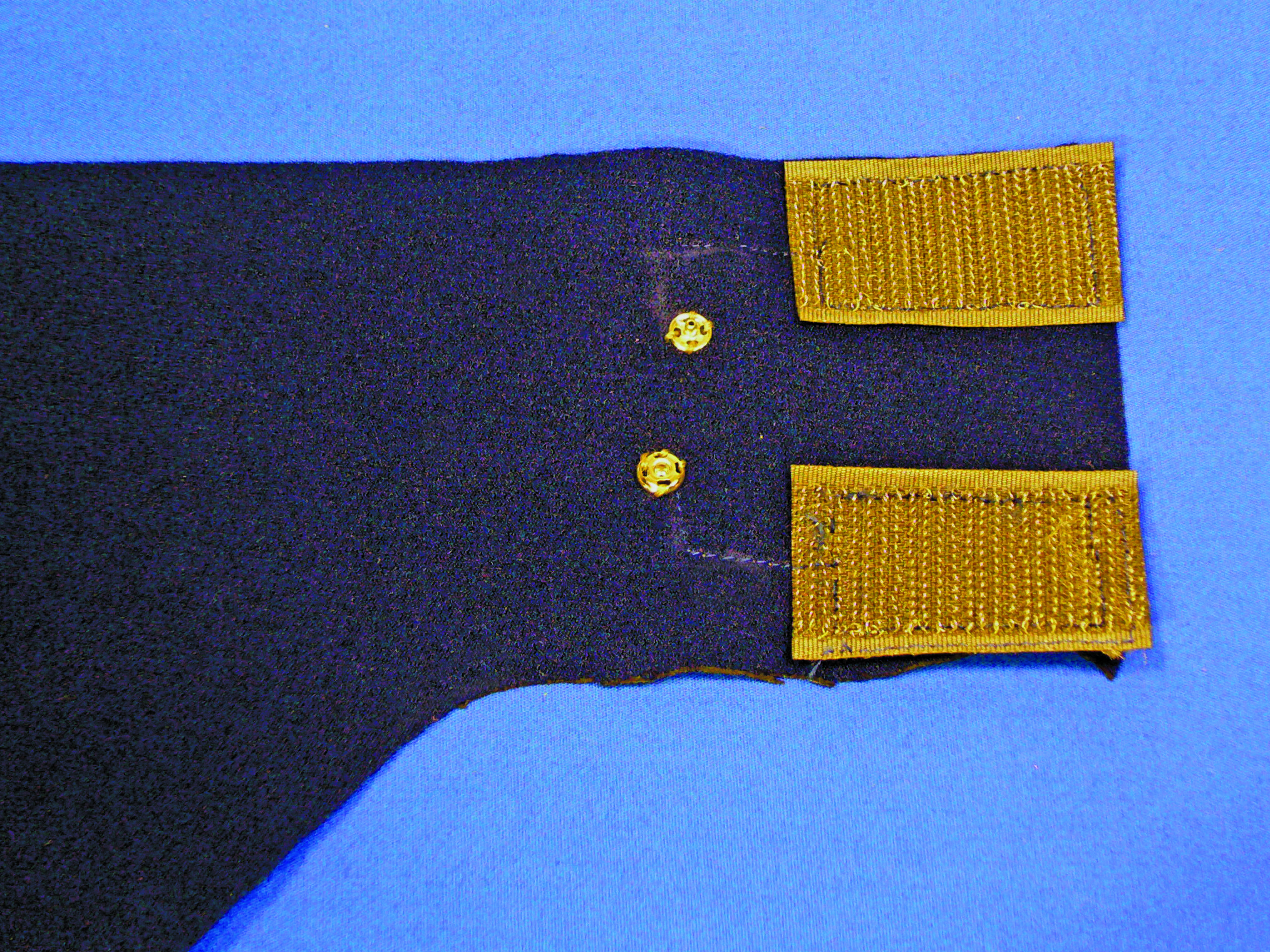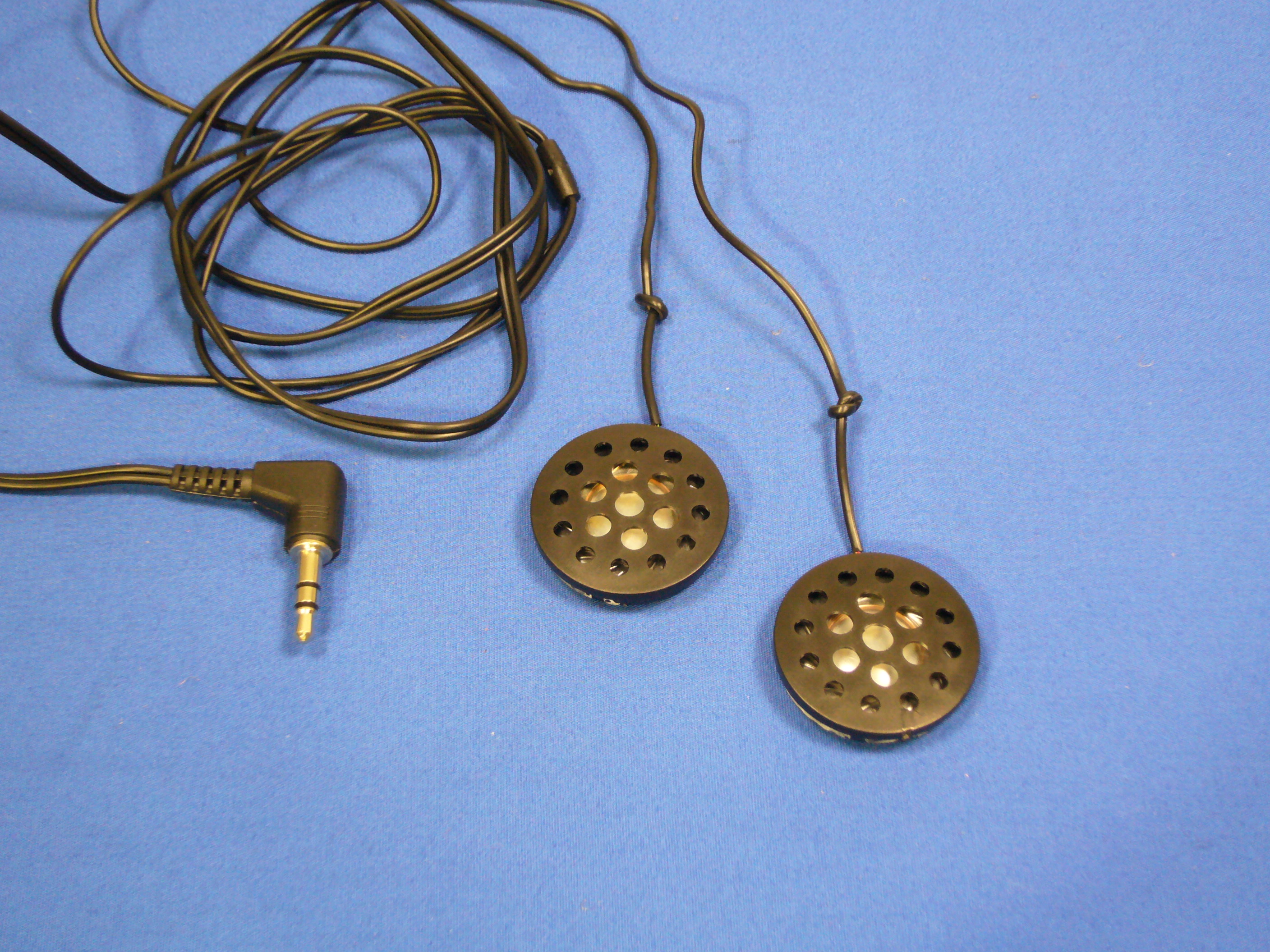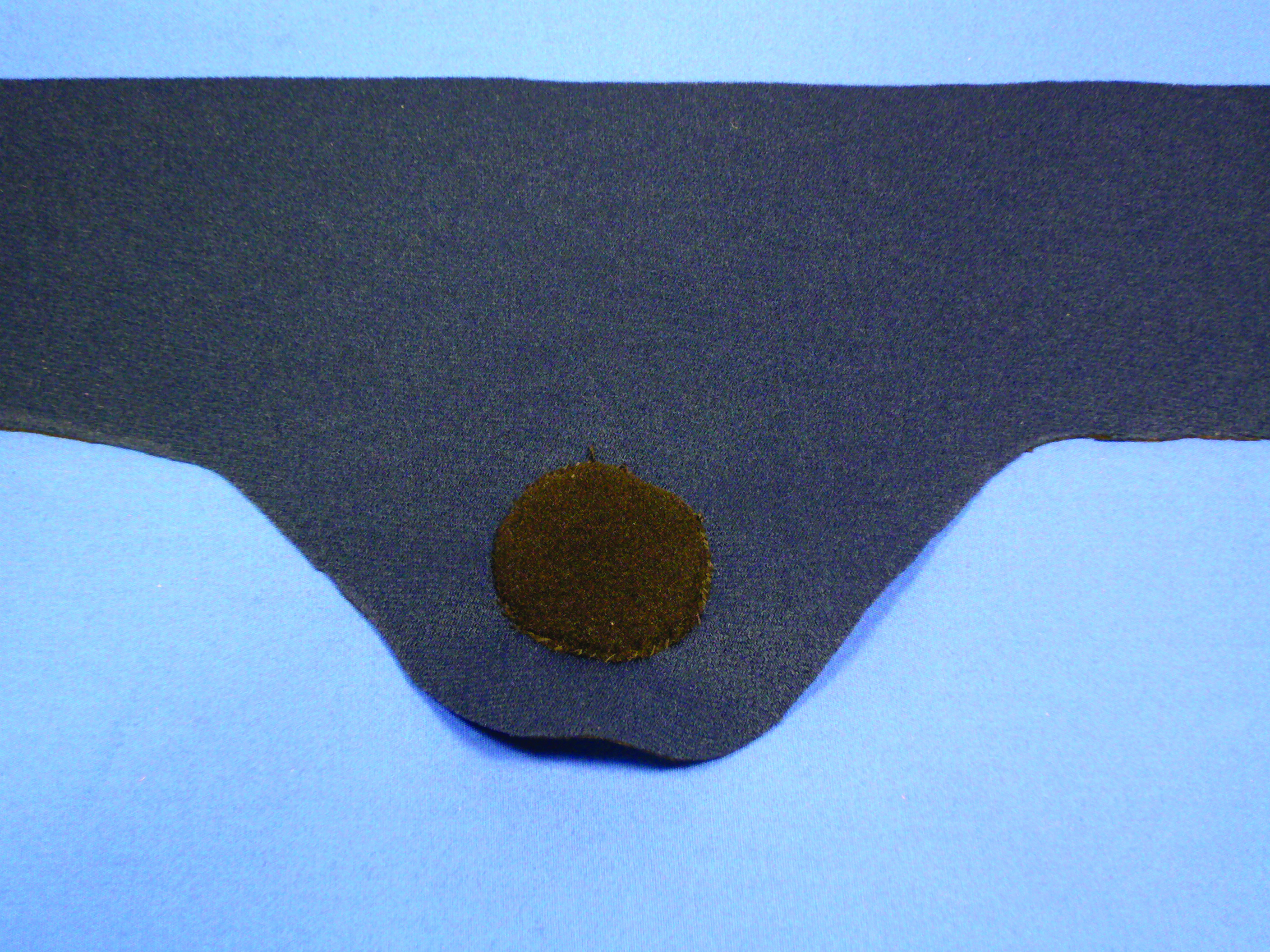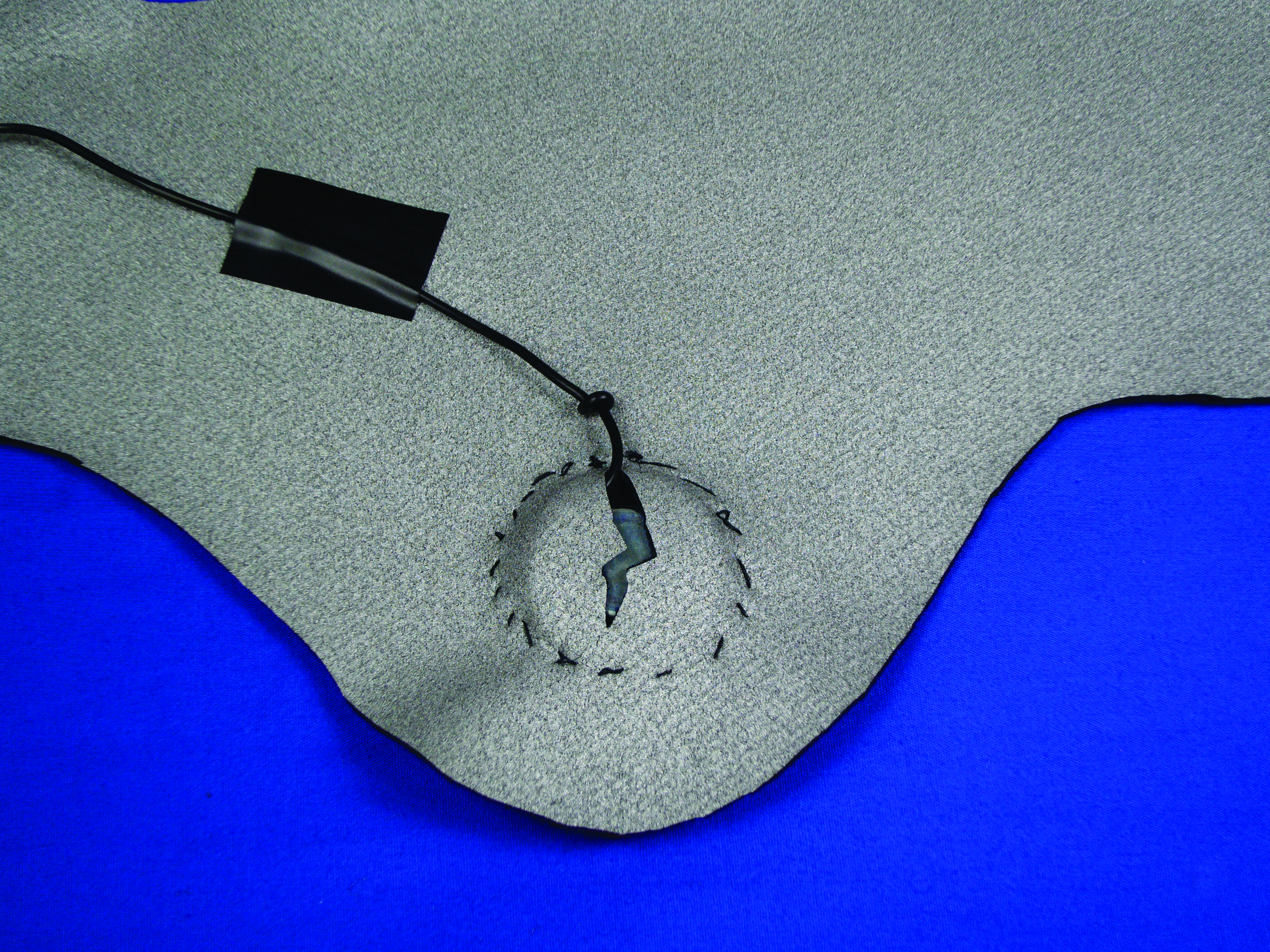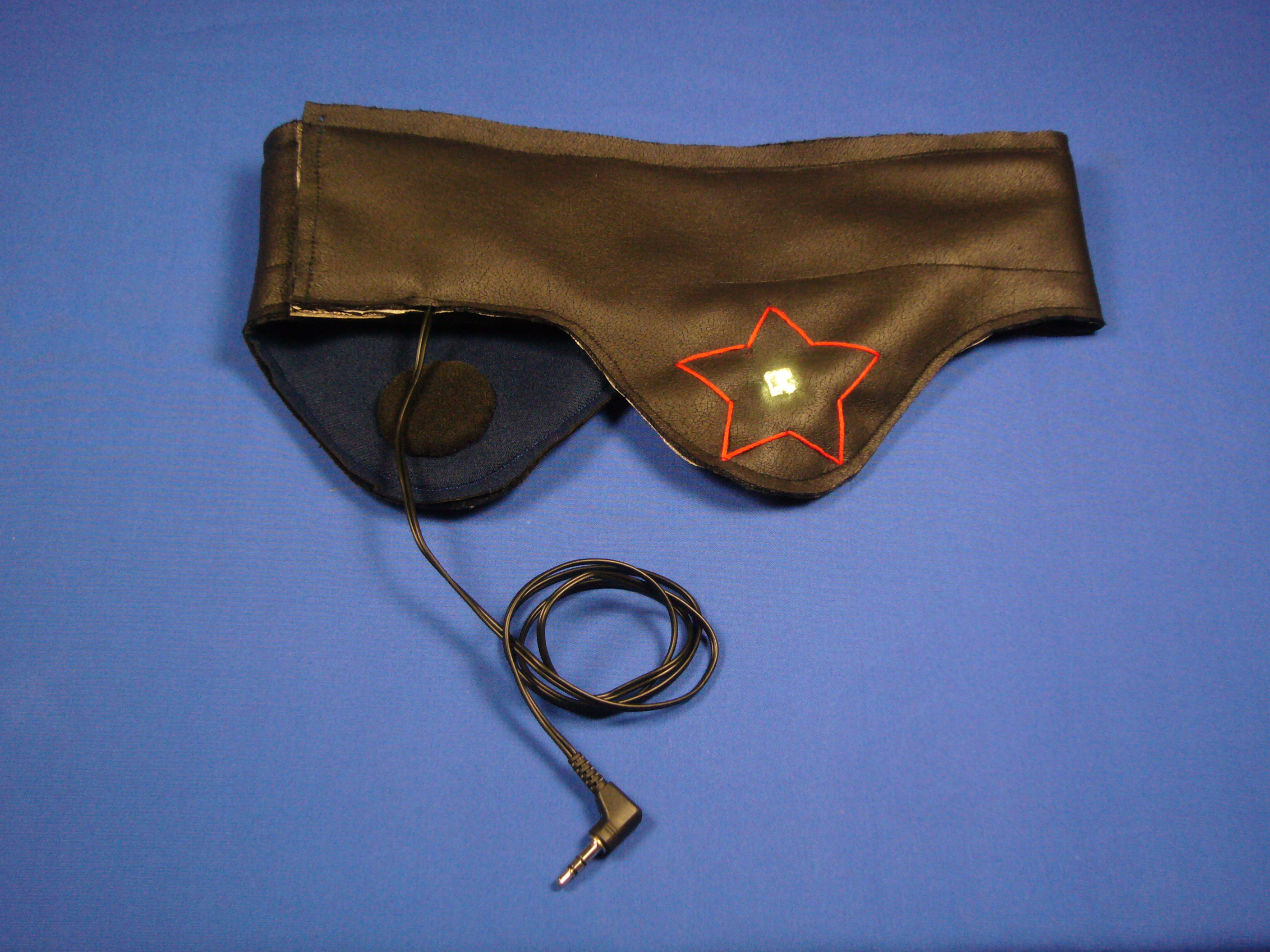Cut two 1″x4″ pieces of neoprene. Place the bobbin of conductive thread back into the machine.
Machine-stitch a 4″ conductive path lengthwise about 1/4 ” from the edge. Machine-stitch a 2″ conductive path about 1/4″ from the opposite edge. Repeat for the second piece of neoprene.
Pierce the leads of an LED with the positive leads facing up through the front of the suede at your desired location.
Place the suede piece wrong side up. Grab one of the neoprene pieces. Pierce the leads of the LED through the neoprene in between the 2 conductive paths. The best way to determine which are the positive and negative leads is to refer to the datasheet or wire them temporarily using alligator clips. The conductive path on the neoprene should be facing up. Using needlenose pliers, bend the leads flush to the fabric. Repeat for the opposite side.
Using conductive thread, hand-sew the positive lead of the LED to the long conductive path on the neoprene. Using a separate piece of conductive thread, sew the negative lead of the LED to the short conductive path on the neoprene. Make sure that the conductive threads from the positive and negative LED leads never touch.
Using conductive thread, hand-sew the long conductive path on the neoprene to the upper positive conductive path on the suede. Using a separate piece of conductive thread, sew the short conductive path on the neoprene to the lower negative conductive path on the suede. Repeat for the second LED.
The positive lead of the LED should now be connected via the neoprene to the upper positive conductive path terminating at the positive loop piece and vice versa, with the negative lead connected via the neoprene to the lower negative conductive path terminating at the negative loop piece.
NOTE: In this example, we have used high-flux LEDs. High-flux LEDs have 4 legs — 2 positive (anodes) and 2 negative (cathodes). You can substitute the high-flux LEDs with typical LEDs. If you are using typical LEDs, curl the negative LED lead (the shorter one) into a loop. Mark it with a black marker to help you distinguish the negative lead from the positive. Then curl the positive lead.
